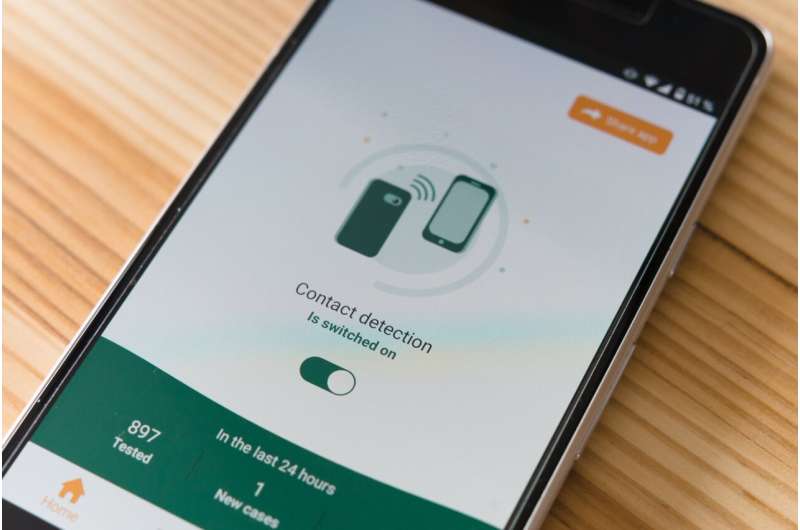December 24, 2023 report
This article has been reviewed according to Science X's editorial process and policies. Editors have highlighted the following attributes while ensuring the content's credibility:
fact-checked
peer-reviewed publication
trusted source
proofread
Tracking SARS-CoV-2 with phone app data offers insights into proximity and duration risk factors

Researchers at the University of Oxford, U.K., have discovered how the rate of exposure time to someone with COVID-19 contact relates to infection risk. They found that the duration of exposure to individuals with COVID-19 contact increases the risk of infection more so than proximity.
In the paper, "Digital measurement of SARS-CoV-2 transmission risk from 7 million contacts," published in Nature, the Oxford team analyzed data from the NHS COVID-19 app in England and Wales to understand the likelihood of SARS-CoV-2 transmission after exposure.
The study analyzed 7 million COVID-19 contacts from the app between April 2021 and February 2022, involving 23 million hours of exposure and 240,000 reported positive tests. Contacts were assessed based on proximity, duration, and infectiousness scores as calculated by the app, which were then used to estimate transmission risk.
The app utilized the privacy-preserving Exposure Notification framework to record measurements of Bluetooth signal strength between smartphones to estimate proximity.
Below 1 meter, the proximity score remained constant and decreased at the inverse square of the distance above 1 meter. Duration was assessed as half-hour blocks in which COVID-19 contact proximity occurred.
Exposure data was skewed toward shorter and lower-risk public encounters, while transmissions occurred across a wide range of risk levels, with durations ranging from one hour to several days.
Household and recurring contacts accounted for a smaller percentage of app-recorded COVID-19 contacts but were responsible for more transmissions due to longer durations and closer proximity in household settings.
Duration of exposure played the most critical role in predicting transmission. Short exposures demonstrated a linear growth in the probability of reported transmission at a rate of 1.1% per hour. After a few hours, this increase in the transmission probability slowed as the likelihood of infection continued to climb.
There are some limitations to analyzing app data to reconstruct infection risk. There is potential sample bias of only having access to data generated by individuals concerned enough to participate with a risk and traceability app. This could be limiting the transmission risk calculations to a segment of the population more likely to take recommended precautions when around others.
The app data also relies on individuals self-reporting COVID-19 positive test results, a step that an unknown percentage of app users could omit. If the app was seen as offering an exposure risk tool to avoid COVID-19, getting COVID-19 could end some users' interest in the app, including any self-reporting of infection.
Despite the limitations, the app data and study analysis offer a rare glimpse into millions of interactions, allowing the best version of available risk observations. The study validated the accuracy and epidemiological relevance of the app's risk score calculations, finding a strong correlation between app-recorded measurements (proximity, duration) and the actual probability of reported transmissions.
More information: Luca Ferretti et al, Digital measurement of SARS-CoV-2 transmission risk from 7 million contacts, Nature (2023). DOI: 10.1038/s41586-023-06952-2
© 2023 Science X Network




















